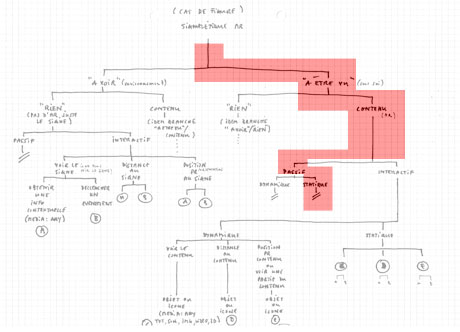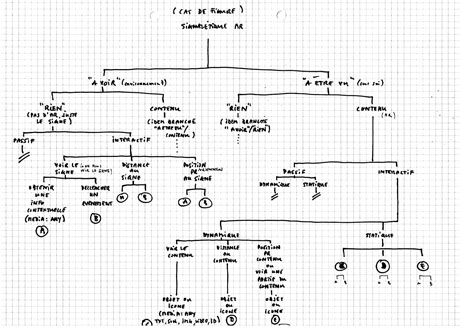« Summer sketches & possible scenarios for october 05 - june 06 | Main | Démonstrateur pour nouvelles fonctionnalités soft AR »
08. 09. 2005 9:35 | 03_Sketches_&_Projects_1 , 12_Curated_posts
ARToolkit + openVRML Software Redesign = XjARToolkit
Within this project and our collaboration with EPFL's Signal Processing Institute, we are working with an open source Augmented Reality software named ARToolkit combined with openVRML. The STI laboratory is developing a signal processing project (camera vision) within the frame of this open source AR project so to improve its performances and give a context to their vision development.
We target that the use of the software within the frame of this project will be mainly on mobile devices (cellphones, portable game stations, pda, tiny laptops, origami-like computers, etc.) even if it is not possible nowadays.
As interaction designers, we emit some reserves about several aspects in the design of this open source combined software (rendering and behaviors):
__it is based on an outdated VRML open source 3d engine (openVRML, not updated anymore) which dramatically limits how you can interact with the 3d and how it is rendered.
__you can only play with static information (static 3d in this case) and you are in a way either too far away of it on a small screen (the 3d object is too small, no details) or too close (you see a fragment of the object).
__the marker (AR sign) should always be fully viewed.
__it has no interaction capacity and is clearly limited to visualization. It therefore doesn't take into account the potential of interaction with the *camera signs* (the software knows where the camera is when it looks at a "camera sign") or even with the added 3d.
-
Sketch of ARToolkit & openVRML's interaction tree (red part) on top of XjARToolkit (see below) planed interaction tree:

We propose to add some features and to provide a redesigned version of this combined software that will be labeled XjARToolkit (see the scenario to redesign the open software):
__we will work with Xj3D as a 3D engine (open source as well). This is a more actual open source real-time 3d format. This 3d engine covers VRML as well as X3D and it has already much more functionalities implemented than openVRML. This will open the capabilities of 3d interaction. Xj3D is also still in development and is targeting to have a player for cellphones as well in the future.
Xj3D is java based.
__As Xj3D is java based, we will connect it to jARToolkit which is a java binding of ARToolkit.
__We will integrate the work of David Marimon (EPFL, Signal Processing Institute) to have a better stability of the 3d integration and a better vision tracking treatment. This will enable us to have interaction with the relative position/orientation of the camera compared to the tracker/sign.
__We will extend the toolkit with another open source software (Rhizoreality) so to connect it to network potential (dynamic content, multi-user, etc.) and to open interaction possibilities with other devices or objects (like television, lights, remote controls, etc.)
Note that we don't target a specific AR application, rather an array of applications some of which being new ways of using such software (no AR in fact, just interaction with camera and their relative positions in relation to AR signs, opening up the fuctions to a kind of spatial interface software). In this sense, the new extended toolkit should allow to produce plentyful of different contents and behaviors in a playful way. In some cases, the content should be created by any end-user (like an sms or mms application) while in other, it could become professional and task specific applications.
XjARToolkit should become a framework for that.
-
Sketch of XjARToolkit's (as a Rhizoreality.mu client) extended interaction & behaviors tree:
Note that this "Interaction tree" should have in the end a relation with the "Tree of AR signs".
Posted by patrick keller at 8. 09. 2005 9:35
